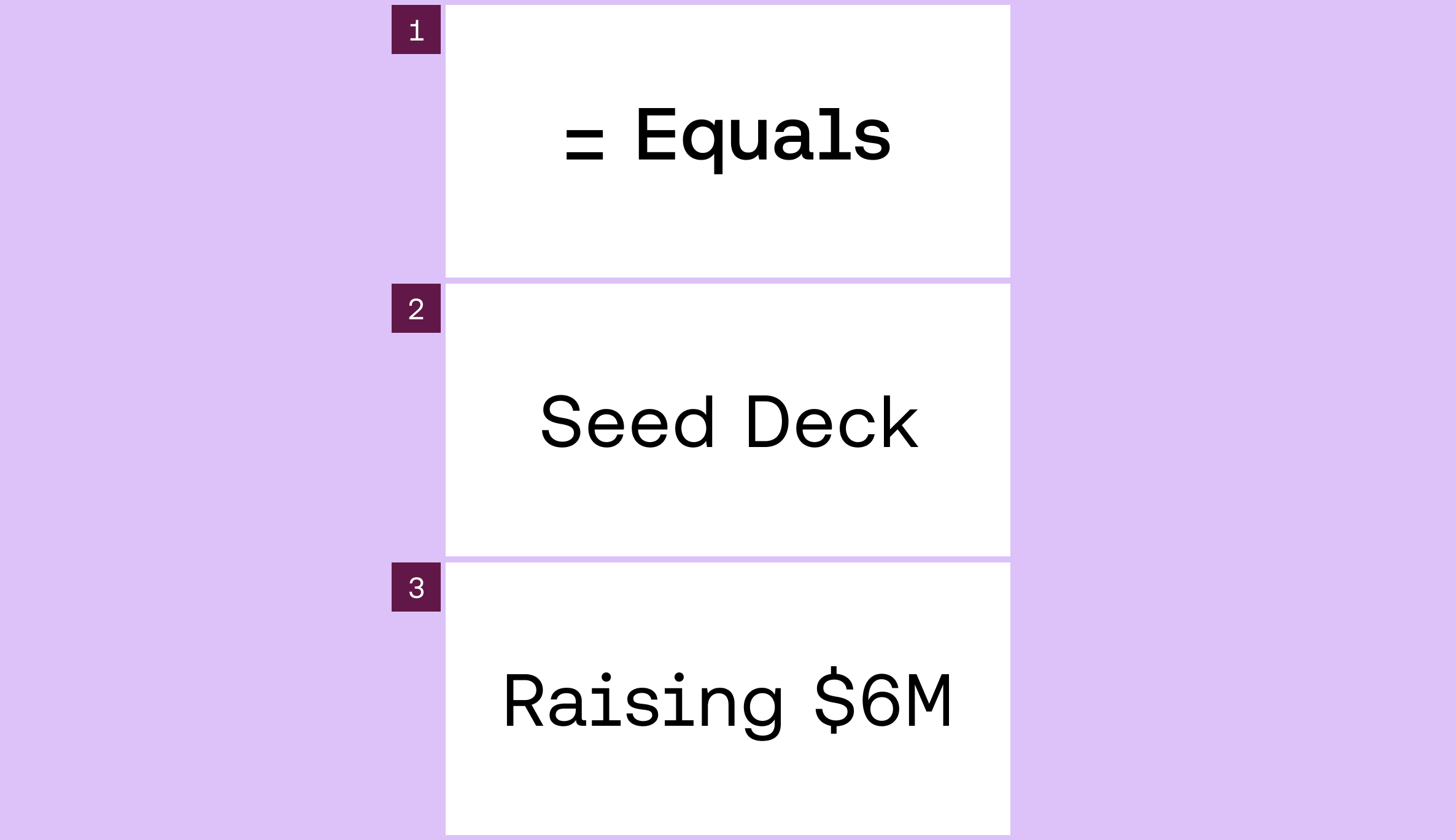A walkthrough of our pitch deck that raised $6.6M
Bobby Pinero | | 4 min read

I get asked by founders all the time for insight on how we raised our initial round. I get asked to review decks. I get asked to share our deck for inspiration. When your business and product are still just ideas, it can be challenging to articulate them in a way that does them justice.
And so, in that spirit, we are passing along our learnings and releasing the deck we used to raise our Seed round. We hope that it helps other teams out there embarking on this wild adventure!
Keep it clear.
Raising a seed round is different from any other round because most times you won’t have a business yet. We didn’t have a product, just an idea. Our pitch doesn't even include a data deck - and truth is, that level of detail will only muddle the narrative at this stage in the game. The key to raising a seed is to keep things unbelievably simple and make very obvious that (1) the problem you're solving is real and deep, (2) the product you're going to build addresses its root causes, and (3) you're the right team to do it.
Slides 2-4: The Problem.
We took great care in articulating the problem we were addressing. Ben and I both experienced firsthand the problems with spreadsheets from our years working together at Intercom, but going through a laundry list of issues would just lose our audience. The problem is complex with many symptoms, but we distilled down to 2 root causes: spreadsheets aren’t connected to live data and don’t keep track of how analyses come together. Real life examples helped us underscore the pain of the problem and how widespread our market is, simply by how relatable the scenarios were.

Slides 5-8: The Product.
The challenge: How do you explain a product that doesn't exist yet? We presented our product vision in a way that was easily digestible by drawing on comparisons. Using other successful software tools as analogies, we articulated what an experience using Equals would feel like by contrast. We scanned the competitive landscape that we’d be entering, and explained why nobody else had solved the root cause of the problem that we’d identified.

Then we made sure to reiterate how our product would directly solve those two problems, and built an MVP roadmap that would deliver the minimum functionality required to get a meaningful signal on market adoption.

Slide 9-10: The People.
At the time, we were a team of two and we focused on differentiating ourselves from other teams that don't have an extensive track record of working together to build something great. We focused on our expertise leading teams and building a business, and allowed that to create credibility and trust with potential investors. We instilled confidence in our ability to execute the vision by wrapping it up with a concrete plan on how we were going to make something magical with the investment we sought. When pulling together the plan, we estimated the size of the team and the amount of time we'd need to build the first pass at the product, and added a bit of buffer time to gain adoption from users.

Practice makes perfect.
Once our slides were ready, I spent a week practicing and refining the pitch. I recorded myself countless times to nail the delivery, focusing on body language and intonation. I spent days in coffee shops drafting out every potential question an investor might ask about our product and market, and meticulously crafted well-thought-out answers. I memorized and played out every prepared response in front of a mirror over and over until I felt confident in our presentation.
Just do it.
Once we’d done everything we could to prepare, it was time to pitch. We focused on keeping our narrative clear, concise, and compelling. We went out looking to raise $4M and ended up with several offers, eventually deciding on a $6M+ raise from some of the best early operators and investors in Silicon Valley.
By sharing the structure behind our success, we hope to guide and inspire you on your path to fundraising success. Our biggest lesson - don't let naysayers distract you. When in doubt, go back to the basics. Build confidence in your understanding of the problem and what it will take to solve it. The rest is history.

By Bobby Pinero
CEO and Co-Founder of Equals.

